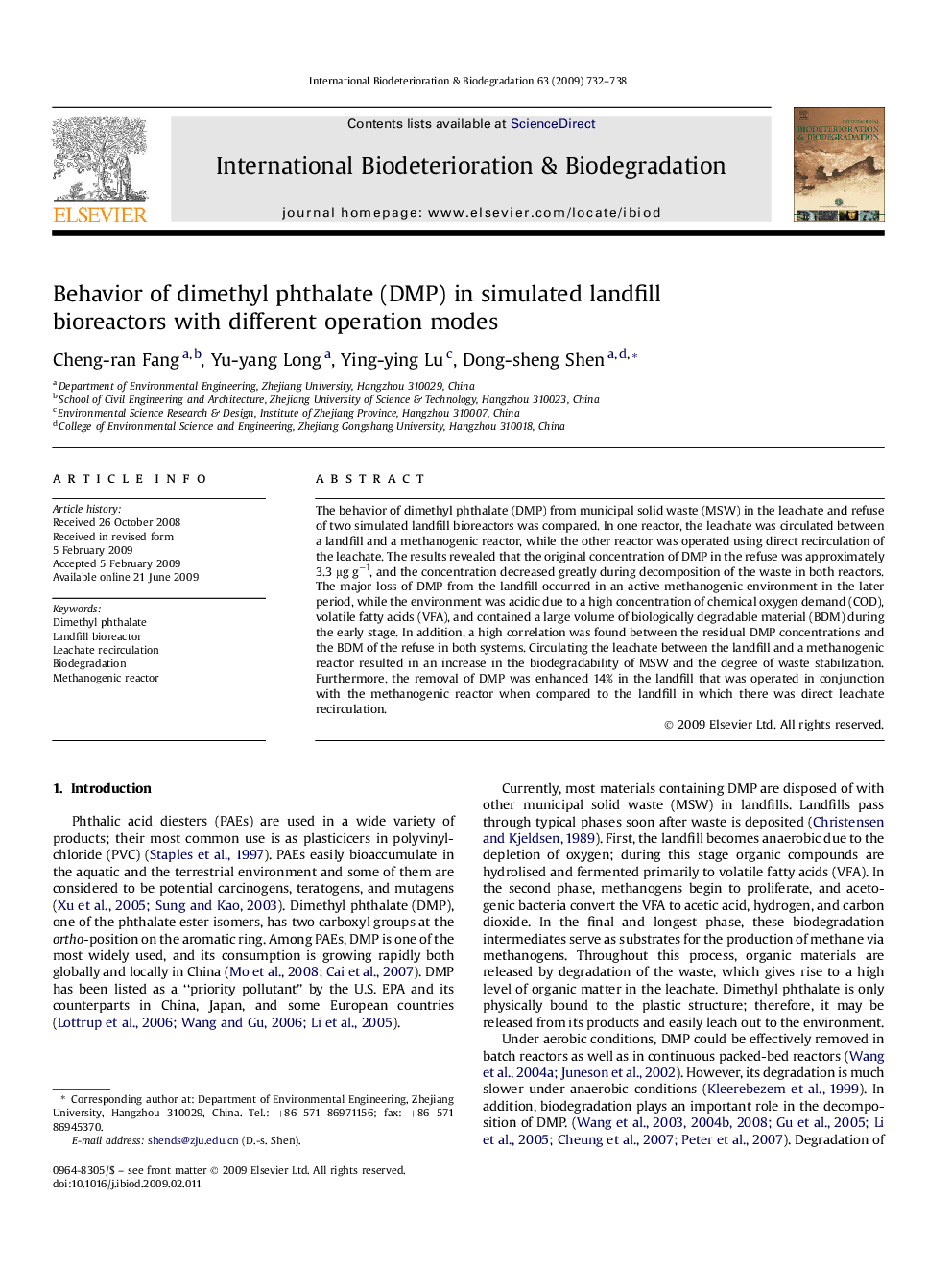| Article ID | Journal | Published Year | Pages | File Type |
|---|---|---|---|---|
| 4365918 | International Biodeterioration & Biodegradation | 2009 | 7 Pages |
The behavior of dimethyl phthalate (DMP) from municipal solid waste (MSW) in the leachate and refuse of two simulated landfill bioreactors was compared. In one reactor, the leachate was circulated between a landfill and a methanogenic reactor, while the other reactor was operated using direct recirculation of the leachate. The results revealed that the original concentration of DMP in the refuse was approximately 3.3 μg g−1, and the concentration decreased greatly during decomposition of the waste in both reactors. The major loss of DMP from the landfill occurred in an active methanogenic environment in the later period, while the environment was acidic due to a high concentration of chemical oxygen demand (COD), volatile fatty acids (VFA), and contained a large volume of biologically degradable material (BDM) during the early stage. In addition, a high correlation was found between the residual DMP concentrations and the BDM of the refuse in both systems. Circulating the leachate between the landfill and a methanogenic reactor resulted in an increase in the biodegradability of MSW and the degree of waste stabilization. Furthermore, the removal of DMP was enhanced 14% in the landfill that was operated in conjunction with the methanogenic reactor when compared to the landfill in which there was direct leachate recirculation.
